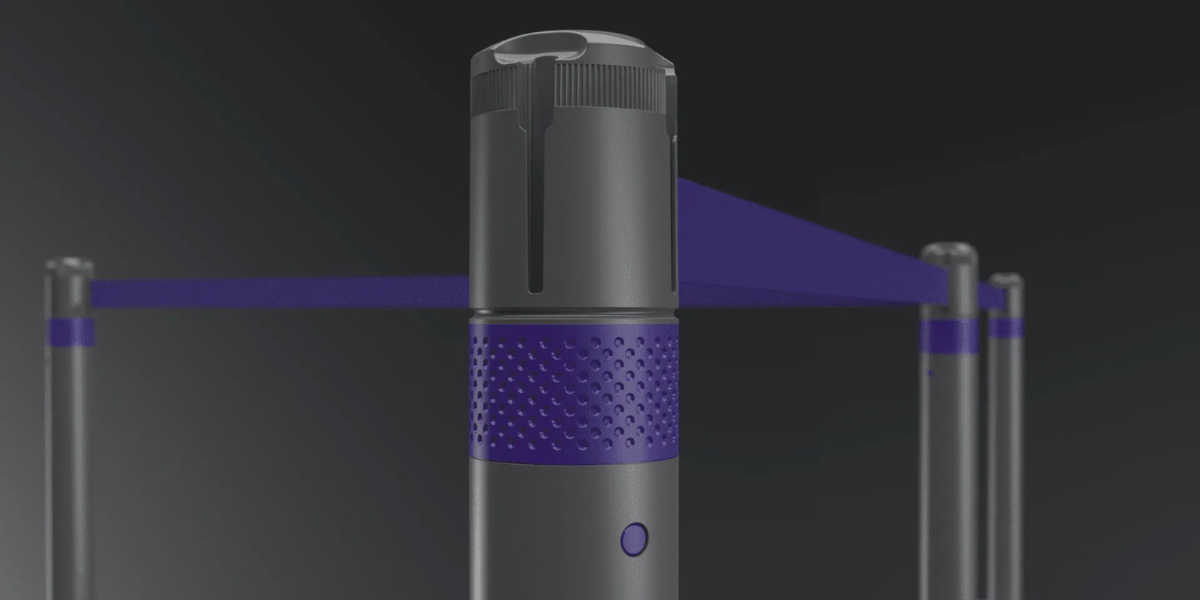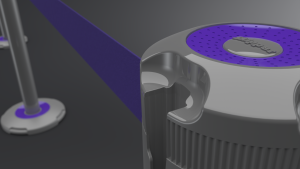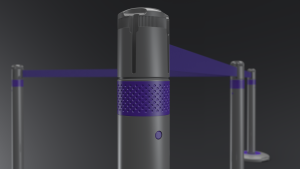
Ensuring safety is a critical concern across various industries. From bustling construction sites to lively events and complex facility operations, the need for effective safety barriers cannot be overstated.
They’re essential in a wide range of settings, from busy construction sites to vibrant events and bustling facilities. They play a crucial role in preventing accidents and ensuring the smooth flow of operations. Think of them as the silent guardians that help keep everyone safe and things running smoothly.
And, they’ve come a long way. In the past, simple ropes or wooden fences were used to keep areas secure. Nowadays, we have high-tech solutions like the Skipper Q system, which offer flexibility and robustness that older systems could only dream of. These modern barriers are designed to meet the evolving needs of various industries, making them indispensable in today's world.
Originally designed for specific uses but proving adaptable across multiple sectors. This article explores the diverse applications of safety barriers, emphasising the Skipper Q system's versatility and practicality.
There are several types of safety barriers, each suited for different purposes. Physical barriers, like fences and gates, provide a solid boundary. Visual barriers, such as cones and tapes, offer clear, visible guidance without blocking the way. Then, there are electronic barriers that use technology to manage access and monitor safety zones.
When choosing a safety barrier system, it's important to compare different options. Some systems are more suited for temporary setups, while others are designed for long-term use. Factors like durability, ease of setup, and adaptability play a key role in deciding which system is right for your needs.
The Skipper Q system is a sophisticated barrier solution designed to enhance safety and manage crowds effectively. Featuring robust materials, a modular design, and ease of deployment, it's built to handle demanding environments.
Initially intended for crowd control and construction site safety, the Skipper Q system excels in creating clear, safe boundaries. Its adaptability has since expanded its applications beyond these initial uses.

The best safety barriers are those that are designed with versatility in mind. This means they should be easy to set up, adjust, and dismantle. Ergonomic design ensures they can be used comfortably and safely by workers, while modular components allow for a variety of configurations.
Let’s take a look at how safety barriers are used in different industries. In healthcare, they’re essential for controlling access to sensitive areas and managing patient flow. Schools use them to keep students safe during events or construction projects. Public transport systems rely on barriers to manage passenger queues and enhance safety at stations.
One of the standout features of the Skipper Q system is its flexibility. It can be configured to fit various environments, thanks to its modular components and adjustable settings.
The system's modularity allows for seamless customisation. Whether you need a short barrier for a small event or an extensive setup for a construction site, the Skipper Q can be tailored to meet specific needs.
Integrating technology with safety barriers can take crowd management to the next level. For instance, RFID tags can help track the number of people in a specific area, while IoT devices can monitor barrier integrity and send alerts if something needs attention.

The future of safety barriers looks exciting with emerging technologies. Imagine barriers equipped with AI that can predict and prevent accidents before they happen. Or drones that can quickly deploy barriers in emergency situations. These innovations are set to revolutionize how we think about safety.
Globally, there’s a growing emphasis on user experience, sustainability, and smart integrations in safety barrier design. As cities get smarter, the demand for barriers that can seamlessly integrate into urban environments is on the rise.
As technology advances, so too do safety barriers. Future developments for systems like the Skipper Q may include smart technology integrations, enhancing their adaptability and effectiveness. We're already starting to explore a range of innovative ideas to take the Skipper Q system to the next level.
One exciting development we're working on is a wall-mounted version of the Skipper Q system. Imagine a sleek casing that fits neatly into a wall holster, saving floor space and providing seamless integration into various environments. This could be especially useful in areas with limited space, like narrow corridors or busy public venues. The wall-mounted system could also incorporate touchless technology for activation, improving hygiene and ease of use.
The future of safety barriers lies in smart technology. There's the potential to explore the integration of RFID tags and sensors that can track and manage crowd density, automatically adjusting barriers to direct flow or prevent overcrowding. Imagine barriers equipped with IoT devices that monitor environmental conditions, like air quality and temperature, to enhance safety and comfort in real-time.
Incorporating AI and machine learning could revolutionise how safety barriers are used. These technologies could predict potential safety hazards by analysing patterns in crowd movement or construction site activity. For example, an AI-powered Skipper Q system could automatically deploy additional barriers or reroute foot traffic in response to detected risks, ensuring proactive rather than reactive safety management.
Safety barriers could be equipped with LED lights and digital displays to improve visibility and provide clear communication. These features could relay important information, such as emergency instructions or directional guidance, enhancing safety and efficiency during events or in construction zones.
Industry experts agree that the future is bright for adaptable safety solutions. A recent survey found that 85% of safety managers believe versatile barrier systems will become a standard requirement across various industries. Their ability to adapt to different needs makes them invaluable in maintaining safety and efficiency.
Safety barriers play a crucial role in maintaining order and ensuring safety across different sectors. The Skipper Q system exemplifies the adaptability and effectiveness of modern safety solutions.
In a world where safety is paramount, having reliable and adaptable tools like the Skipper Q system can make all the difference. Whether you’re organizing an event, managing a construction site, or overseeing facility operations, these barriers are essential for maintaining a safe environment.